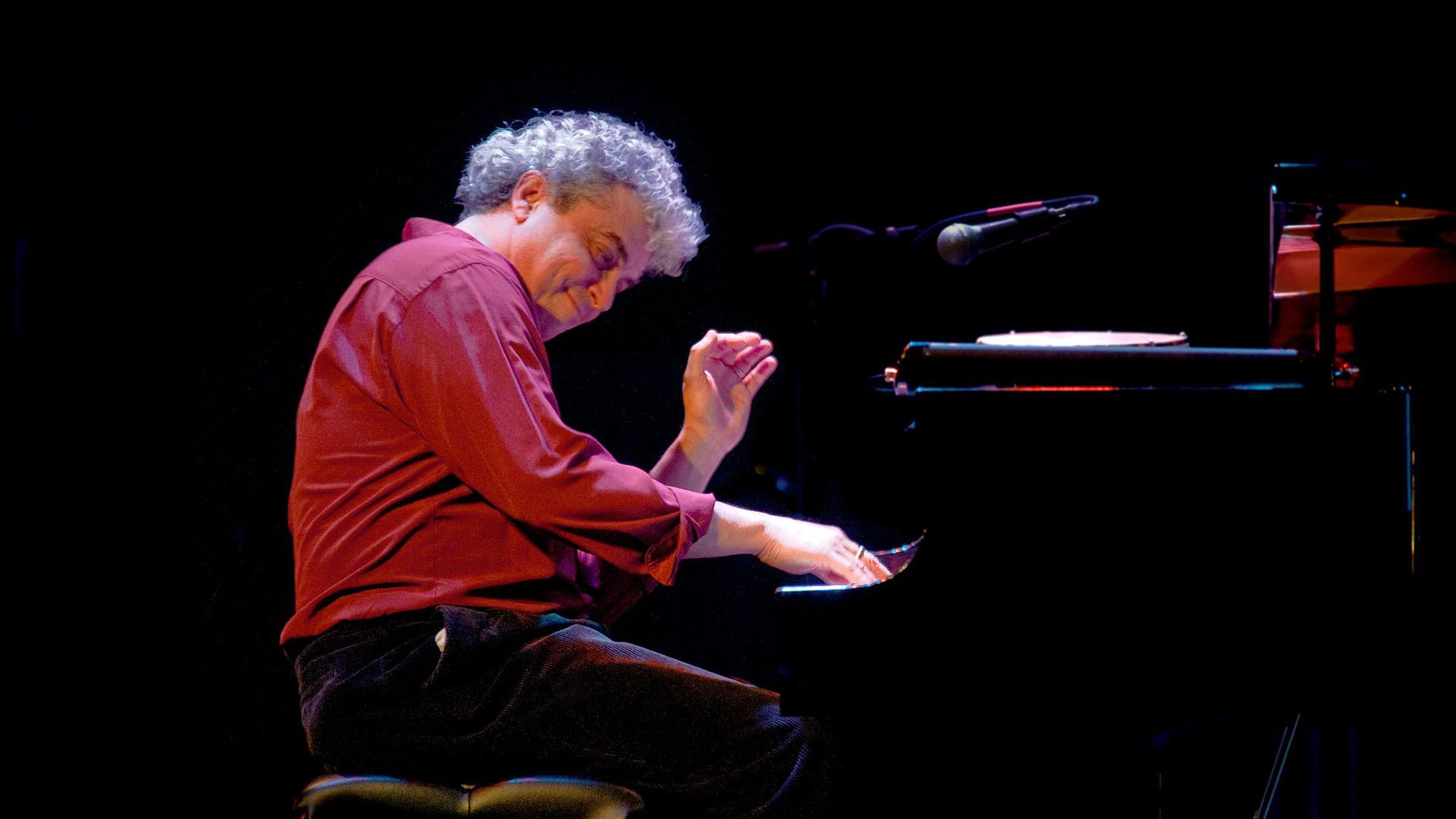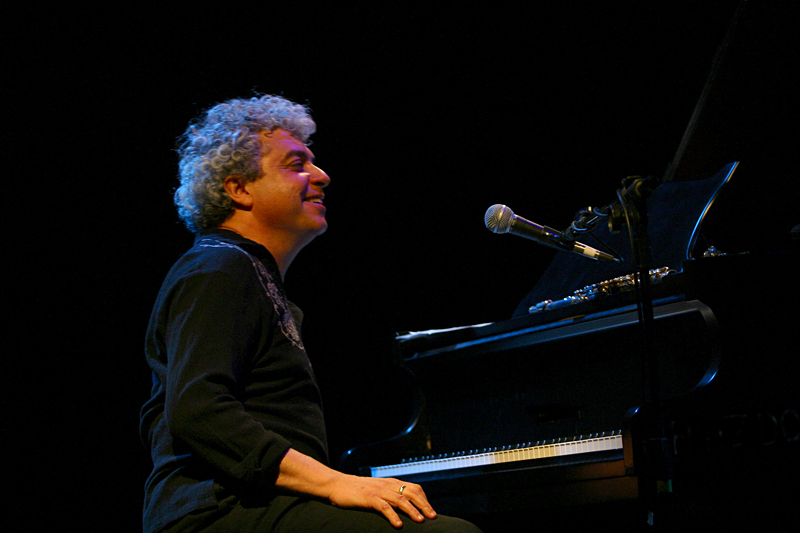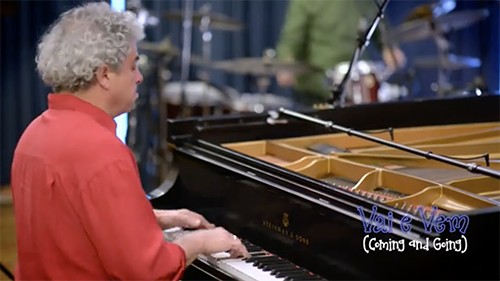
Jovino Santos Neto
Three-time Latin Grammy nominee Jovino Santos Neto, a master pianist, composer and arranger, is among the top Brazilian musicians working today.
Seminar Description
Seminar Description
Samba Jazz: History & Evolution
Welcome to this live seminar on Samba Jazz! In this session, we explore the rich history and evolution of this vibrant musical genre, which blends traditional Brazilian samba rhythms with jazz harmonies and improvisation.
By the end of this lesson, you will understand the key characteristics of Samba Jazz, its historical context, and how the style developed alongside Bossa Nova. We will also listen to and analyze recordings from legendary Brazilian pianists and discuss essential rhythmic techniques for playing Samba Jazz on the piano.
What Is Samba Jazz?
Samba Jazz emerged in the late 1950s and early 1960s, running parallel to the rise of Bossa Nova. While Bossa Nova is often associated with soft, guitar-based rhythms and minimalistic accompaniment, Samba Jazz takes a more energetic and improvisational approach, incorporating influences from American jazz.
The key rhythmic foundation of Samba Jazz is the samba groove, which maintains a strong 2/4 feel with syncopated accents. Pianists in this style often use percussive left-hand comping, syncopated chord anticipations, and rhythmically complex melodic lines.
Unlike traditional samba music, which features large ensembles with multiple percussionists, Samba Jazz often appears in smaller groups such as trios or quartets, where the piano plays a central rhythmic and harmonic role.
Key Figures in Samba Jazz
Several influential Brazilian pianists and composers shaped the Samba Jazz genre. Some of the key names include:
- Johnny Alf – Considered a pioneer of Bossa Nova and Samba Jazz, Alf’s music was deeply influenced by jazz harmony.
- Sérgio Mendes – Known for his fusion of Brazilian rhythms with jazz and pop, Mendes introduced Samba Jazz to international audiences.
- João Donato – A master of syncopation, Donato’s compositions and piano style feature distinctive rhythmic phrasing.
- Hermeto Pascoal – A highly innovative composer and pianist, Pascoal expanded the harmonic and rhythmic vocabulary of Samba Jazz.
- Luiz Eça & The Tamba Trio – This trio’s sophisticated arrangements and tight ensemble playing set a high standard for Samba Jazz groups.
- Eumir Deodato – Known for his orchestral arrangements and jazz fusion influences, Deodato brought a fresh harmonic approach to Samba Jazz.
These musicians created a repertoire that remains essential for any pianist interested in Brazilian jazz.
Understanding The Samba Groove
The foundation of Samba Jazz is its unique rhythmic feel. Some key characteristics include:
- Two-Beat Pulse – The bass often emphasizes beats 1 and 3, while the piano and other instruments syncopate around this foundation.
- Anticipated Chord Changes – Chords are often played slightly before the beat, creating a forward-moving energy.
- Clave Influence – Some Samba Jazz pieces incorporate Afro-Cuban rhythmic elements, such as the montuno feel or clave patterns.
- Drums & Percussion Interaction – The interplay between the piano and rhythm section is crucial in achieving an authentic groove.
Essential Piano Techniques
To capture the true essence of Samba Jazz on the piano, consider the following techniques:
1. Left-Hand Comping Patterns
Use quarter-note comping to simulate the surdo (bass drum) feel in samba. Experiment with root-7th voicings, guide-tone voicings, and shell voicings to keep the harmony clear and supportive.
2. Syncopated Right-Hand Melodies
Samba Jazz melodies frequently use offbeat accents and grace notes. Practice playing simple melodies with a laid-back feel while keeping your left hand steady.
3. Two-Hand Coordination
Develop independence between your hands by practicing left-hand ostinatos while improvising syncopated right-hand phrases.
4. Chord Anticipation & Pushes
Many Samba Jazz tunes anticipate chord changes by playing them on the “and” of 2 or 4 rather than directly on the beat.
5. Using Three-Note Voicings
Rather than playing dense chords, Samba Jazz often uses three-note spread voicings to maintain clarity and avoid overpowering the rhythm section.
5 Practice Tips for Samba Jazz
- Listen to Samba Jazz recordings – Studying legendary pianists will help you internalize the feel and phrasing.
- Practice left-hand rhythm patterns – Develop a solid 2/4 samba comping pattern to support your improvisation.
- Work on syncopation – Play melodies and chords ahead of the beat to create the characteristic Samba Jazz groove.
- Explore different tempos – Some Samba Jazz tunes are laid-back, while others are high-energy and driving. Practice at various speeds.
- Jam with a drummer or metronome – Samba Jazz relies heavily on rhythmic interaction, so play along with percussion tracks to refine your groove.
Conclusion
Samba Jazz is a vibrant and dynamic style that bridges Brazilian rhythms and jazz improvisation. By understanding the historical context, key pianists, and essential playing techniques, you can begin incorporating Samba Jazz into your repertoire.
Whether you’re learning classic tunes like "Batida Diferente," "Samba do Avião," or "Stan", or exploring more modern interpretations, Samba Jazz offers endless possibilities for creative expression on the piano.
Stay tuned for more lessons and deep dives into this fantastic style!






